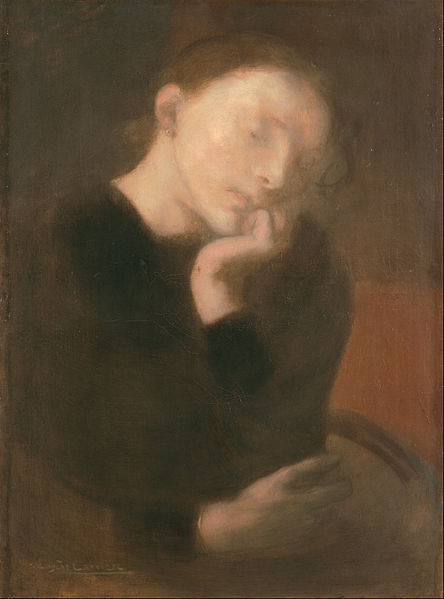
A few weeks ago I had a visit from a soul-sister who lives on the other side of the country. In one of our long and lovely conversations, she casually mentioned a practice she does when she’s reflecting on relationship issues. It’s called Ho’oponopo. Ho’ what? I wondered? When I googled it, I found this article by Sebastien Gendry.
The first time I tried it I was in tears within moments. I felt unwanted negative attitudes and emotions softening and being replaced with positive, healing ones. Most remarkable to me was that they immediately translated into behavioral changes. Something very powerful was going on here, and still is. It’s simply a way to focus on and harness the most powerful force in the universe: Love.
I don’t know if ho’oponopono—which is similar to the Buddhist practice of tonglen, or loving-kindness—will resonate with you or not. But since midlife my heart’s desire has been to learn how to love, and this practice feels like an answer to prayer. My recent posts about relationships have received such a positive response that I’m reblogging Gendry’s article here in the hope that you might find it helpful too.
How to Practice Ho’oponopono in Four Simple Steps. Author: Sebastien Gendry.
Have you heard of the Hawaiian therapist who cured an entire ward of criminally insane patients, without ever meeting any of them or spending a moment in the same room? It’s not a joke. The therapist was Dr. Ihaleakala Hew Len. He reviewed each of the patients’ files, and then he healed them by healing himself. The amazing results seem like a miracle, but then miracles do happen when you use Ho’oponopono, or Dr. Len’s updated version called Self I-Dentity Through Ho’oponopono (SITH). I had the pleasure of attending one of his lectures a few years ago and started practicing Ho’oponopono immediately. The results are often astounding. Do you need a miracle?
What you might wish to understand is how this can possibly work. How can you heal yourself and have it heal others? How can you even heal yourself?
Why would it affect anything “out there”? The secret is there is no such thing as “out there” – everything happens to you in your mind. Everything you see, everything you hear, every person you meet, you experience in your mind. You only think it’s “out there” and you think that absolves you of responsibility. In fact it’s quite the opposite: you are responsible for everything you think, and everything that comes to your attention. If you watch the news, everything you hear on the news is your responsibility. That sounds harsh, but it means that you are also able to clear it, clean it, and through forgiveness change it.
There are four simple steps to this method, and the order is not that important. Repentance, Forgiveness, Gratitude and Love are the only forces at work – but these forces have amazing power.
 The best part of the updated version of Ho’oponopono is you can do it yourself, you don’t need anyone else to be there, you don’t need anyone to hear you. You can “say” the words in your head. The power is in the feeling and in the willingness of the Universe to forgive and love.
The best part of the updated version of Ho’oponopono is you can do it yourself, you don’t need anyone else to be there, you don’t need anyone to hear you. You can “say” the words in your head. The power is in the feeling and in the willingness of the Universe to forgive and love.
Step 1: Repentance – I’M SORRY
As I mention above, you are responsible for everything in your mind, even if it seems to be “out there.” Once you realize that, it’s very natural to feel sorry. I know I sure do. If I hear of a tornado, I am so full of remorse that something in my consciousness has created that idea. I’m so very sorry that someone I know has a broken bone that I realize I have caused.
This realization can be painful, and you will likely resist accepting responsibility for the “out there” kind of problems until you start to practice this method on your more obvious “in here” problems and see results.
So choose something that you already know you’ve caused for yourself? Over-weight? Addicted to nicotine, alcohol or some other substance? Do you have anger issues? Health problems? Start there and say you’re sorry. That’s the whole step: I’M SORRY. Although I think it is more powerful if you say it more clearly: “I realize that I am responsible for the (issue) in my life and I feel terrible remorse that something in my consciousness has caused this.”
Step 2: Ask Forgiveness – PLEASE FORGIVE ME
Don’t worry about who you’re asking. Just ask! PLEASE FORGIVE ME. Say it over and over. Mean it. Remember your remorse from step 1 as you ask to be forgiven.
Step 3: Gratitude – THANK YOU
Say “THANK YOU” – again it doesn’t really matter who or what you’re thanking. Thank your body for all it does for you. Thank yourself for being the best you can be. Thank God. Thank the Universe. Thank whatever it was that just forgave you. Just keep saying THANK YOU.

Step 4: Love – I LOVE YOU
This can also be step 1. Say I LOVE YOU. Say it to your body, say it to God. Say I LOVE YOU to the air you breathe, to the house that shelters you. Say I LOVE YOU to your challenges. Say it over and over. Mean it. Feel it. There is nothing as powerful as Love.
That’s it. The whole practice in a nutshell. Simple and amazingly effective.
Thank you for this, Jenna!
For more information, here’s a YouTube interview with Dr. Ihaleakala Hew Len:




17 Responses
Reblogged this on lampmagician.
Many thanks, Alaedin.
Thanks as always <3
Dear Jeanie, I am in need of embracing this powerful practice again, as I have done in the past, and I am inspired by your expression of it so fully and beautifully here. I can see I brought the idea of the ancient art of Ho’oponopono to the exact right person. Thank you for helping me through your writing to focus my own intention again and for sharing it in such a loving way with others. Much love, Jenna
Dear Jenna, Yes, you did bring this to the right person, and for that I will always be grateful. Thank you, and you’re welcome! 🙂 Your gentle and sincere model of “joyful participation in the sorrows of the world” is a breath of fresh air and an inspiration to me. Much love, Jeanie
Thank you for this wonderful practice. I love Jenna for her wisdom and love too, she is one of the most “sparkly” persons that I have met in my life. I have a practice, whenever my heart is filled with grief, to envision the line of love between me and the person I want to disconnect with. I cut the line between me and that person, i carefully envision rolling up that line and giving it back to that person. When you hand the person who hurt you the line, you say to that person: “I give you back your energy and I hope that the best things will happen to you. It is time to let go”. I have used it to come to terms with ex lovers and with former best friends that I felt had betrayed me and it is something that is really helming for me.
Thank you, Susanne, for sharing your practice of disengagement with people who have hurt you. We all need a way of recognizing and protecting ourselves from toxic energy, whether it’s coming from us or others, and we also need a way to release our attachments to outcomes. It sounds as if this practice does both for you.
Dear Jeanie, thank you. Sometimes something does come along at just the right time – I never thought I’d say this vis a vis anyone’s post but right now I’m saying it. All of these 4 lessons, especially the first 3 are apropos something that happened in the last 16 hours or so. I’ll be going back to this post, or I’ll write it down “I’m sorry”; ‘please forgive me’; and ‘thank you’ for a lesson I have learned over these last hours …
I’m so pleased to know this post came just when you needed it. Synchronicities like this always remind me of the benevolence of the universe. To know we are loved like that…..well, it’s mind-blowing and game-changing. And love-making! 🙂
Dear Jeanie, What a blessing this is! Thank you for sharing this profound piece of wisdom. I too was crying in moments…and it was so healing. Many thanks to you. Love, Enid
Hello, dear Enid. It’s always a pleasure and a soul-healing affirmation to hear from you. Many thanks to you too. Love, Jeanie
Beautifully simple—and so needed right now. I’m going to start practicing immediately! Thank you for sharing it.
You’re so welcome.
Hi Jeanie, Thanks for the article, as always I found it useful and interesting. It did make me smile when you suggested that “I realize that I am responsible for the (issue) in my life and I feel terrible remorse that something in my consciousness has caused this.” Is a useful alternative to ” I’m sorry”. Too many words to hide behind, what could be deeper and more basic than to say and feel “I’m sorry”. Some things are better said with fewer words . But we all find the way that means most to us. Best Wishes . Gary
Hi Gary, The suggestion you refer to was made by the writer of the article, Sebastien Gendry. I guess I didn’t make it clear enough that the text in blue is his article which I reblogged. I’ve added his name again after the title to clear it up. Anyway, as you note, different things work for different people. As he notes, he has found that more useful in his own practice. For myself, I prefer “I’m sorry” too. 🙂 Thanks for stopping by.
Thank you, Jeanie. This is a beautiful meditation any time and especially for times like these. “Repentance, Forgiveness, Gratitude and Love.” I love this way of taking responsibility for ourselves, our thoughts, and our world so we can extend forgiveness, love, and gratitude. I also love that the order isn’t important. For me, it’s not. As in Pema Chodron’s “Tonglen on the Spot,” there is no need to be fancy or rigid. We can do what works for us when we notice our own suffering or the suffering of someone else or the world. Large or small issues are met with action at the moment, while we’re driving, while we’re walking, while we’re alone or with others, when we’re at the grocery store or on a mediation cushion. I love focusing on this today as I deal with my jittery mind. It’s time for an afternoon ho’oponopono walking meditation.
Thanks, Elaine. You’ve had so many years of wonderful teachings in these areas and I appreciate your sharing them here.
I hadn’t heard about “Tonglen on the Spot” but I’ve been using Ho’oponopono for the same reason: as a choice to consciously re-center myself in the moment, to put myself in an aware, receptive, and benevolent space. I imagine there are many ways of doing this and as you say it’s not about the names or methods, but simply what works for you. Like you, I too find walking in nature to be a very natural way of easing into this space.